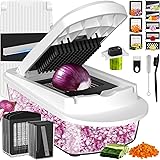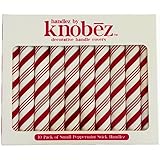Our site contains ads and uses Amazon affiliate links. We may earn a small commission at no extra cost to you. We know ads can be distracting, and we’re sorry for any inconvenience they cause. It helps us keep the site running. Thanks for your understanding and supporting us!
There’s something magical about rolling out sugar cookie dough on a flour-dusted counter. The sweet aroma of butter and vanilla filling your kitchen as you press festive shapes into the soft dough.
These classic sugar cookies are the foundation of every holiday celebration, parties, and special occasion that calls for beautifully decorated treats.
The perfect sugar cookie cutout walks a delicate line between tender and sturdy.
It should be soft enough to melt on your tongue, yet firm enough to hold intricate shapes without crumbling.
The edges should be crisp and clean, maintaining their definition after baking, while the center remains slightly chewy.
When you bite into one, you’ll hear the gentlest crack before your teeth sink into buttery sweetness. This recipe delivers exactly that.
Cookies with a velvety texture that tastes like pure nostalgia, with just enough structure to support layers of royal icing, sprinkles, and all your creative decorating dreams.
Most Shared: Longhorn Brussels Sprouts Recipe: Sweet, Spicy & Crispy Delight
Why This Recipe Stands Out
• No Chilling Required between Rolling: Unlike many recipes that demand multiple chilling sessions, this dough can be rolled immediately.
After one rest period, saving you precious time without sacrificing quality.
• Holds Shapes Perfectly: The precise flour-to-fat ratio ensures your gingerbread men keep their buttons and your stars maintain sharp points, even after baking.
• Buttery Flavor without Spreading: Real butter creates that melt-in-your-mouth taste while the dough composition prevents cookies from losing their shape in the oven.
Read More: 17 Five-Ingredient Lazy Dinner Ideas to Save the Day
• Sturdy Enough for Decorating: These cookies won’t crack or crumble when you spread thick royal icing or press on heavy decorations, making them ideal for elaborate designs.
• Consistent Thickness throughout: The dough rolls evenly without pulling back, creating cookies that bake uniformly with no thick centers or thin edges.
• Never Dry or Cakey: The perfect balance of ingredients ensures soft, tender cookies that stay moist for days without becoming hard or crumbly.
Read More: 19 Easy Pumpkin Cake Recipes for Thanksgiving Desserts
Ingredients You’ll Need
For the Cookie Dough:
- 3 Cups all-purpose flour, plus extra for dusting
- 1½ Teaspoons baking powder
- ½ Teaspoon salt
- 1 Cup (2 sticks) unsalted butter, softened to room temperature
- 1 Cup granulated sugar
- 1 Large egg, room temperature
- 2 Teaspoons pure vanilla extract
- ½ Teaspoon almond extract (optional but recommended)
For Decorating (Optional):
- Royal Icing or buttercream frosting
- Food Coloring in assorted colors
- Sprinkles, sanding sugar, or edible decorations
Tools to Use
- Stand mixer or electric hand mixer
- Large mixing bowls
- Whisk
- Rubber spatula
- Rolling pin
- Cookie cutters in desired shapes
- Parchment paper or silicone baking mats
- Baking sheets
- Wire cooling racks
- Plastic wrap
- Ruler or rolling pin guides (optional)
8 Blade All-in-1 Vegetable Chopper Mandoline Slicer with Container, Food Chopper...
$19.99 (as of November 5, 2025 23:25 GMT +00:00 - More infoProduct prices and availability are accurate as of the date/time indicated and are subject to change. Any price and availability information displayed on [relevant Amazon Site(s), as applicable] at the time of purchase will apply to the purchase of this product.)Simple Modern Trek | 40 oz Christmas Tumbler with Handle and Straw Lid | Cup Hol...
$37.99 (as of November 5, 2025 23:25 GMT +00:00 - More infoProduct prices and availability are accurate as of the date/time indicated and are subject to change. Any price and availability information displayed on [relevant Amazon Site(s), as applicable] at the time of purchase will apply to the purchase of this product.)Handlez by Knobēz: Small Peppermint Stick - 10pk - Stretch Over Hardware Decorat...
Now retrieving the price.
(as of November 5, 2025 23:25 GMT +00:00 - More infoProduct prices and availability are accurate as of the date/time indicated and are subject to change. Any price and availability information displayed on [relevant Amazon Site(s), as applicable] at the time of purchase will apply to the purchase of this product.)Total Time and Servings
- Prep Time: 20 minutes
- Chilling Time: 1 hour
- Baking Time: 8-10 minutes per batch
- Cooling Time: 30 minutes
- Total Time: Approximately 2 hours
- Yield: 24-36 cookies (depending on cutter size)
Note: The total time can vary based on how many batches you bake and whether you’re decorating the cookies. If decorating with royal icing, add an additional 1-2 hours for icing preparation and decoration, plus drying time (2-4 hours for royal icing to set completely).
How to Make Perfect Sugar Cookie Cutouts
Step-1: Prepare Your Dry Ingredients
Whisk together the flour, baking powder, and salt in a medium bowl until thoroughly combined.
The gentle whisking sound signals you’re incorporating air, which helps create a lighter texture. Set this bowl aside where you can easily reach it.
The flour mixture should look uniform with no streaks of baking powder visible.
This even distribution prevents some cookies from rising more than others.
Step-2: Cream the Butter and Sugar
Place the softened butter in your mixing bowl. Beat it on medium speed for about 30 seconds until smooth and creamy.
Add the granulated sugar and continue beating for 2 to 3 minutes.
You’ll know it’s ready when the mixture turns pale yellow and fluffy, with a texture resembling whipped frosting.
Small air pockets will form, creating that characteristic light appearance. Stop and scrape down the bowl’s sides halfway through to ensure even mixing.
Step-3: Add the Egg and Extracts
Crack the egg into the butter mixture and pour in the vanilla extract and almond extract if using.
Beat on medium speed until completely incorporated, about 1 minute.
The mixture may look slightly curdled at first, but keep mixing. It will come together into a smooth, creamy consistency.
The aroma of vanilla should be intoxicating at this point, filling your kitchen with sweetness.
Step-4: Incorporate the Flour Mixture
Turn your mixer to low speed. Add the flour mixture in three additions, mixing just until the flour disappears after each addition.
The dough will transform from a wet batter to a thick, cohesive mass.
Stop mixing as soon as no dry flour remains visible. Overmixing develops gluten, which makes cookies tough rather than tender.
The dough should pull away from the bowl’s sides and hold together when pressed.
Step-5: Chill the Dough
Divide the dough into two equal portions. Shape each into a flat disk about 1 inch thick.
Wrap each disk tightly in plastic wrap, pressing out any air pockets.
Refrigerate for at least 1 hour or up to 3 days. The chilled dough should feel firm but not rock-hard.
If refrigerated longer than 2 hours, let it sit at room temperature for 10 minutes before rolling to prevent cracking.
Step-6: Prepare Your Work Surface
Preheat your oven to 350°F (175°C). Line two baking sheets with parchment paper or silicone mats.
Lightly dust your work surface and rolling pin with flour. Use just enough to prevent sticking but not so much that it dries out the dough.
Excess flour creates tough, dry cookies.
Step-7: Roll Out the Dough
Place one chilled disk on your floured surface.
Apply gentle, even pressure as you roll from the center outward, rotating the dough a quarter turn after each roll.
Aim for ¼-inch thickness for cookies that are sturdy yet tender. Thicker cookies stay softer but may not hold fine details.
Thinner cookies become crispier and showcase intricate shapes better.
If the dough sticks, slide an offset spatula underneath to loosen it and add a light dusting of flour.
Step-8: Cut Your Shapes
Dip your cookie cutters in flour before each cut to prevent sticking. Press straight down firmly, then lift straight up without twisting.
Twisting seals the edges and prevents clean cuts.
Place cutouts on prepared baking sheets, spacing them 2 inches apart.
They won’t spread much, but this spacing ensures even air circulation. Gather scraps, press them together gently, and roll once more.
Avoid re-rolling more than twice, as the dough becomes tougher with each roll.
Step-9: Bake to Perfection
Slide the baking sheets into your preheated oven. Bake for 8 to 10 minutes, depending on cookie size.
Small cookies need only 7 to 8 minutes, while large shapes may require 10 to 12 minutes.
Watch for the edges to become set and barely golden. The centers should still look pale and slightly soft.
They’ll firm up during cooling. Overbaking creates hard, dry cookies that crack easily when decorated.
Step-10: Cool Completely

Remove the baking sheets from the oven when cookies are done. Let them rest on the sheets for 5 minutes.
This brief resting period allows them to set without breaking.
Transfer cookies to wire cooling racks using a thin spatula. The racks allow air to circulate underneath, preventing soggy bottoms.
Let cookies cool completely, at least 30 minutes, before decorating. Warm cookies will melt frosting and cause colors to bleed.
Related Recipes You’ll Love to Try
- Snickerdoodle Banana Bread with Cinnamon Crunch
- Pumpkin Bread Ring With Maple Cream Cheese Filling
- Cinnamon Sugar Focaccia Sourdough Bread with Cream Cheese Icing
- Easy Christmas Meringue Cookies to Wow Your Guests
Nutritional Information
Per Cookie (based on 24 cookies, without frosting):
- Calories: 145
- Protein: 2g
- Fat: 8g
- Carbohydrates: 17g
- Sodium: 85mg
Tips for Success
• Room Temperature Ingredients Matter: Cold eggs and butter don’t incorporate smoothly, creating a lumpy dough that bakes unevenly.
Set them out 30 minutes before starting.
• Measure Flour Correctly: Spoon flour into your measuring cup and level it with a knife. Scooping directly from the bag packs in extra flour, making cookies dry and tough.
• Keep Dough Cold While Working: Roll out only one disk at a time, keeping the other refrigerated. Warm dough spreads and loses shape during baking.
• Use Parchment Paper: It prevents sticking without adding extra flour that can dry out cookies. Parchment also makes cleanup effortless.
• Don’t Skip the Almond Extract: While optional, this ingredient adds incredible depth and makes people wonder about your secret ingredient.
• Rotate Baking Sheets: Halfway through baking, rotate sheets front to back for even browning, especially if your oven has hot spots.
• Store Dough for Later: Wrapped dough disks freeze beautifully for up to 3 months. Thaw in the refrigerator overnight before rolling.
• Test Bake One Cookie First: If unsure about timing, bake a single test cookie to check texture before committing the whole batch.
Common Mistakes to Avoid
• Rolling Dough too Warm: Soft dough sticks to everything and spreads during baking, turning your stars into blobs.
Always work with properly chilled dough.
• Over-Flouring the Work Surface: Too much flour gets worked into the dough with each roll, creating dry, tough cookies. Use the minimum amount needed.
• Cutting Cookies too Close Together: When cutting shapes too near each other, you create lots of scraps that need re-rolling. Space cuts wisely to minimize waste.
• Leaving Cookies on Hot Pans: Cookies continue baking on hot sheets, leading to overdone edges and dry texture. Always transfer to cooling racks promptly.
• Decorating before Completely Cool: Rushing to frost warm cookies causes icing to melt and slide off, ruining your careful designs.
Patience pays off here.
• Using Old Baking Powder: Expired leavening agents won’t give cookies proper lift, resulting in dense, flat cookies.
Test freshness by mixing a pinch with hot water; it should bubble vigorously.
• Twisting Cookie Cutters: Twisting seals the cut edges, preventing cookies from rising properly and creating uneven shapes with compressed sides.
Creative Serving Ideas
• Cookie Sandwich Creations: Spread buttercream, Nutella, or lemon curd between two cookies for an elegant sandwich cookie that impresses at parties.
• Ice Cream Cookie Sandwiches: Press slightly softened ice cream between two cookies, roll edges in mini chocolate chips or sprinkles, then freeze for a stunning frozen treat.
• Cookie Decorating Party Station: Set out plain baked cookies with bowls of different colored frostings, sprinkles, candies, and edible markers for guests to create their own designs.
• Floating Tea Cookies: Bake cookies slightly thinner (⅛ inch) and serve alongside hot tea or coffee for delicate dunking cookies that soften perfectly in warm beverages.
• Cookie Gift Boxes: Layer decorated cookies in clear boxes with tissue paper, tied with ribbon, for beautiful homemade gifts that show you care.
• Seasonal Cookie Trees: Stack graduated sizes of star cookies with frosting between each layer, creating a three-dimensional cookie Christmas tree centerpiece.
• Breakfast Cookie Parfaits: Crumble baked cookies over Greek yogurt with fresh berries for an indulgent breakfast that feels like dessert.
• Cookie Cake Toppers: Use small cookie cutters to create mini cookies that sit perfectly atop cupcakes or as decorative cake toppers for birthday celebrations.
Frequently Asked Questions
Can I Make this Dough Ahead of Time?
Yes, wrapped dough disks keep perfectly in the refrigerator for up to 5 days or in the freezer for up to 3 months.
Thaw frozen dough overnight in the fridge before rolling. This make-ahead flexibility makes holiday baking much less stressful.
Why Do My Cookies Spread during Baking?
Cookie spreading usually happens when dough is too warm or contains too much butter relative to flour.
Make sure your dough is properly chilled and measure flour accurately by spooning it into the cup rather than scooping.
Also check that your butter was softened, not melted.
How Thick Should I Roll the Dough?
Quarter-inch thickness creates the ideal balance between sturdy structure for decorating and tender texture for eating.
Thicker cookies stay softer but may not bake evenly, while thinner cookies become crispier but are more fragile.
Can I Use Salted Butter Instead?
You can substitute salted butter, but reduce the added salt to ¼ teaspoon to prevent overly salty cookies. Unsalted butter gives you better control over the final flavor balance.
How Do I Prevent Cookies from Puffing up?
These cookies shouldn’t puff excessively if you follow the recipe precisely.
If puffing occurs, you may have added too much baking powder or your oven temperature is too low.
Check your oven temperature with an oven thermometer for accuracy.
How Long Do Baked Cookies Stay Fresh?
Undecorated cookies stay fresh in an airtight container at room temperature for up to 1 week.
Decorated cookies with royal icing last 2 weeks at room temperature. For longer storage, freeze unfrosted cookies for up to 3 months.
Can I Make These Cookies Gluten-Free?
Replace all-purpose flour with a 1:1 gluten-free baking flour blend for best results.
The texture will be slightly more delicate, so handle the dough gently and consider rolling it between two sheets of parchment paper.
What’s the Best Way to Store Decorated Cookies?
Layer decorated cookies between sheets of parchment paper in an airtight container.
Store at room temperature away from humidity, which can make royal icing weep or soften buttercream frosting.
My Dough is too Crumbly to Roll, What Do I Do?
If dough crumbles when rolling, it’s either too cold or too dry. Let it sit at room temperature for 10 minutes, then knead it a few times.
If still crumbly, add water 1 teaspoon at a time until it holds together.
Can I Add other Flavors to this Recipe?
Absolutely! Replace vanilla extract with lemon, orange, or peppermint extract for different flavor profiles.
You can also add ½ teaspoon of spices like cinnamon or cardamom for warmth.
Do I Need to Grease the Baking Sheets?
No, parchment paper or silicone mats provide enough non-stick surface without adding extra fat that could make cookies spread.
Greasing is unnecessary and may actually cause unwanted spreading.
Why are My Cookie Edges Brown but Centers Raw?
This indicates your oven temperature is too high, causing edges to set before centers bake through. Reduce temperature by 25°F and bake slightly longer for more even results.








